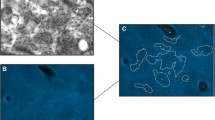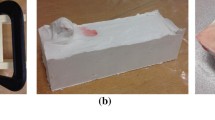Abstract
Advanced glycation end products (AGEs) accumulate in bone extracellular matrix as people age. Although previous evidence shows that the accumulation of AGEs in bone matrix may impose significant effects on bone cells, the effect of matrix AGEs on bone formation in vivo is still poorly understood. To address this issue, this study used a unique rat model with autograft implant to investigate the in vivo response of bone formation to matrix AGEs. Fluorochrome biomarkers were sequentially injected into rats to label the dynamic bone formation in the presence of elevated levels of matrix AGEs. After sacrificing animals, dynamic histomorphometry was performed to determine mineral apposition rate (MAR), mineralized surface per bone surface (MS/BS), and bone formation rate (BFR). Finally, nanoindentation tests were performed to assess mechanical properties of newly formed bone tissues. The results showed that MAR, MS/BS, and BFR were significantly reduced in the vicinity of implant cores with high concentration of matrix AGEs, suggesting that bone formation activities by osteoblasts were suppressed in the presence of elevated matrix AGEs. In addition, MAR and BFR were found to be dependent on the surrounding environment of implant cores (i.e., cortical or trabecular tissues). Moreover, MS/BS and BFR were also dependent on how far the implant cores were away from the growth plate. These observations suggest that the effect of matrix AGEs on bone formation is dependent on the biological milieu around the implants. Finally, nanoindentation test results indicated that the indentation modulus and hardness of newly formed bone tissues were not affected by the presence of elevated matrix AGEs. In summary, high concentration of matrix AGEs may slow down the bone formation process in vivo, while imposing little effects on bone mineralization.






Similar content being viewed by others
References
Sanguineti R, Storace D, Monacelli F et al (2008) Pentosidine effects on human osteoblasts in vitro. Ann N Y Acad Sci 1126:166–172
Odetti P, Rossi S, Monacelli F et al (2005) Advanced glycaztion end products and bone loss during aging. Ann N Y Acad Sci 1043(1):710–717
Yamagishi S-I (2011) Role of advanced glycation end products (AGEs) in osteoporosis in diabetes. Curr Drug Targets 12(14):2096–2102
Khan TS, Fraser LA (2015) Type 1 diabetes and osteoporosis: from molecular pathways to bone phenotype. J Osteoporos 2015 22:174186
Ji JD, Woo JH, Choi SJ et al (2009) Advanced glycation end-products (AGEs): a novel therapeutic target for osteoporosis in patients with rheumatoid arthritis. Med Hypotheses 73(2):201–202
Karim L, Tang SY, Sroga GE et al (2013) Differences in non-enzymatic glycation and collagen cross-links between human cortical and cancellous bone. Osteoporos Int 24(9):2441–2447
Hein G, Wiegand R, Lehmann G et al (2003) Advanced glycation end-products pentosidine and N epsilon-carboxymethyllysine are elevated in serum of patients with osteoporosis. Rheumatology 42(10):1242–1246
Saito M, Marumo K (2011) Roles of collagen enzymatic and advanced glycation end products associated crosslinking as a determinant of bone quality. Nihon Rinsho 69(7):1189–1197
Tang SY, Zeenath U, Vashishth D (2007) Effects of non-enzymatic glycation on cancellous bone fragility. Bone 40(4):1144–1151
Ural A, Janeiro C, Karim L et al (2015) Association between non-enzymatic glycation, resorption, and microdamage in human tibial cortices. Osteoporos Int 26(3):865–873
McCarthy AD, Etcheverry SB, Bruzzone L et al (1997) Effects of advanced glycation end-products on the proliferation and differentiation of osteoblast-like cells. Mol Cell Biochem 170(1–2):43–51
McCarthy AD, Etcheverry SB, Bruzzone L et al (2001) Non-enzymatic glycosylation of a type I collagen matrix: effects on osteoblastic development and oxidative stress. BMC cell biol 2(1):16
Mercer N, Ahmed H, Etcheverry SB et al (2007) Regulation of advanced glycation end product (AGE) receptors and apoptosis by AGEs in osteoblast-like cells. Mol Cell Biochem 306(1):87–94
Alikhani Z, Alikhani M, Boyd C et al (2007) Advanced glycation end products stimulate osteoblast apoptosis via the MAP kinase and cytosolic apoptotic pathways. Bone 40(2):345–353
Zhu XF, Wang TC, Zhang RH (2012) Effects of yigu capsule containing serum on the osteoblast differentiation and the expressions of osteoprotegerin and bone morphogenetic protein 2 after treatment by advanced glycation end products in vitro. Zhongguo Zhong Xi Yi Jie He Za Zhi 32(4):525–529
Franke S, Ruster C, Pester J et al (2011) Advanced glycation end products affect growth and function of osteoblasts. Clin Exp Rheumatol 29(4):650–660
Hein G, Weiss C, Lehmann G et al (2006) Advanced glycation end product modification of bone proteins and bone remodelling: hypothesis and preliminary immunohistochemical findings. Ann Rheum Dis 65(1):101–104
Zhou Z, Xiong WC (2011) RAGE and its ligands in bone metabolism. Front Biosci (Schol Ed). 3:768–776
Valcourt U, Merle B, Gineyts E et al (2007) Non-enzymatic glycation of bone collagen modifies osteoclastic activity and differentiation. J Biol Chem 282(8):5691–5703
Miyata T, Notoya K, Yoshida K et al (1997) Advanced glycation end products enhance osteoclast-induced bone resorption in cultured mouse unfractionated bone cells and in rats implanted subcutaneously with devitalized bone particles. J Am Soc Nephrol 8(2):260–270
Tanaka KI, Yamaguchi T, Kanazawa I et al (2015) Effects of high glucose and advanced glycation end products on the expressions of sclerostin and RANKL as well as apoptosis in osteocyte-like MLO-Y4-A2 cells. Biochem Biophys Res Commun 461(2):193–199
Schwartz AV, Garnero P, Hillier TA et al (2009) Pentosidine and increased fracture risk in older adults with type 2 diabetes. J Clin Endocrinol Metab 94(7):2380–2386
Viguet-Carrin S, Farlay D, Bala Y et al (2008) An in vitro model to test the contribution of advanced glycation end products to bone biomechanical properties. Bone 42(1):139–149
DeGroot J (2004) The AGE of the matrix: chemistry, consequence and cure. Curr Opin Pharmacol 4(3):301–305
Vashishth D, Gibson GJ, Khoury JI et al (2001) Influence of nonenzymatic glycation on biomechanical properties of cortical bone. Bone 28(2):195–201
An YH, Martin KL (2003) Handbook of histology methods for bone and cartilage. Humana, New York
Parfitt AM, Drezner MK, Glorieux FH et al (1987) Bone histomorphometry: standardization of nomenclature, symbols, and units. report of the ASBMR histomorphometry nomenclature committee. J Bone Miner Res 2(6):595–610
Fischer-Cripps, Anthony C (2011) Nanoindentation Testing. Nanoindentation, 1st edn. Springer, New York
Rho JY, Tsui TY, Pharr GM (1997) Elastic properties of human cortical and trabecular lamellar bone measured by nanoindentation. Biomaterials 18(20):1325–1330
Vayron R, Barthel E, Mathieu V et al (2012) Nanoindentation measurements of biomechanical properties in mature and newly formed bone tissue surrounding an implant. J Biomech Eng 134(2):021007
Bataille R, Chappard D, Marcelli C et al (1991) Recruitment of new osteoblasts and osteoclasts is the earliest critical event in the pathogenesis of human multiple myeloma. J Clin Invest 88(1):62–66
Sousa DM, Baldock PA, Enriquez RF et al (2012) Neuropeptide Y Y1 receptor antagonism increases bone mass in mice. Bone 51(1):8–16
Li G, Xu J, Li Z (2012) Receptor for advanced glycation end products inhibits proliferation in osteoblast through suppression of Wnt, PI3K and ERK signaling. Biochem Biophys Res Commun 423(4):684–689
Gangoiti MV, Cortizo AM, Arnol V et al (2008) Opposing effects of bisphosphonates and advanced glycation end-products on osteoblastic cells. Eur J Pharmacol 600(1–3):140–147
Cowin SC (2001) Bone mechanics handbook. CRC, Boca Raton
Schnitzler CM, Mesquita J (1998) Bone marrow composition and bone microarchitecture and turnover in blacks and whites. J Bone Miner Res 13(8):1300–1307
Perry MJ, McDougall KE, Hou SC et al (2008) Impaired growth plate function in bmp-6 null mice. Bone 42(1):216–225
Wong KP, Kim YJ, Lee T (2009) Measurement of Changes in Mechanical and Viscoelastic Properties of Cancer-induced Rat Tibia by using Nanoindentation. In: Lim, Goh (eds) 13th international conference on biomedical engineering. Springer, Heidelberg, pp 1900–1903
Jamsa T, Rho JY, Fan Z et al (2002) Mechanical properties in long bones of rat osteopetrotic mutations. J Biomech 35(2):161–165
Follet H, Boivin G, Rumelhart C et al (2004) The degree of mineralization is a determinant of bone strength: a study on human calcanei. Bone 34(5):783–789
Oates TW Jr, Galloway P, Alexander P et al (2014) The effects of elevated hemoglobin A (1c) in patients with type 2 diabetes mellitus on dental implants: survival and stability at one year. J Am Dent Assoc 145(12):1218–1226
Acknowledgments
The authors are grateful of Dr. Bijay Giri for his assistance in handling all animal works for this study, and the fellowship support to Ms. Xiao Yang (No. 201306020100) from China Scholarship Council (CSC).
Author information
Authors and Affiliations
Corresponding authors
Ethics declarations
Conflict of Interest
Xiao Yang, Ahmed Jenan Mostafa, Mark Appleford, Lian-Wen Sun, and Xiaodu Wang declare no competing financial interests exist.
Human and Animal Rights
All experiments were performed in accordance with University Veterinarian & Director Laboratory Animal Resources Center at University of Texas at San Antonio for animal care, and the experimental protocols were approved by the institutional animal care and use committee (IACUC).
Rights and permissions
About this article
Cite this article
Yang, X., Mostafa, A.J., Appleford, M. et al. Bone Formation is Affected by Matrix Advanced Glycation End Products (AGEs) In Vivo. Calcif Tissue Int 99, 373–383 (2016). https://doi.org/10.1007/s00223-016-0153-3
Received:
Accepted:
Published:
Issue Date:
DOI: https://doi.org/10.1007/s00223-016-0153-3




